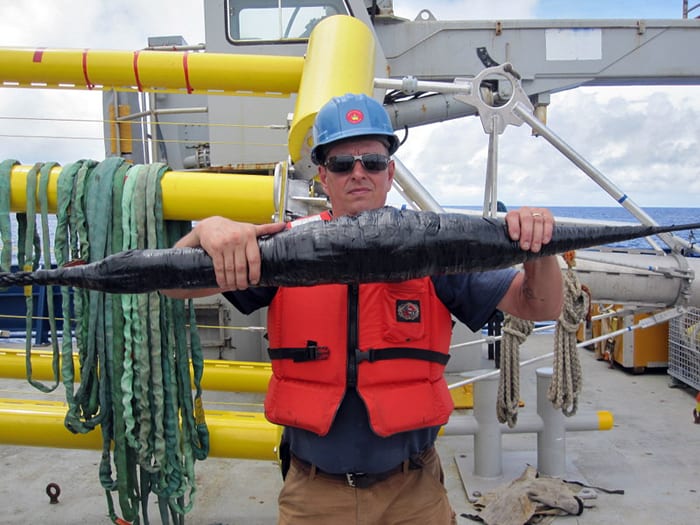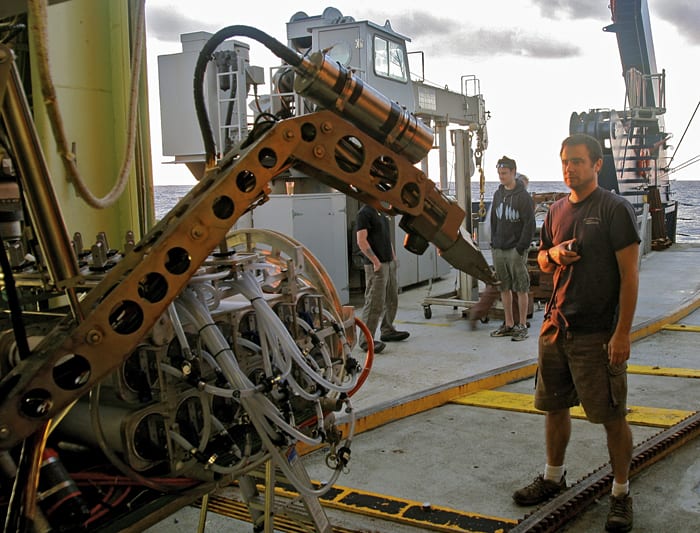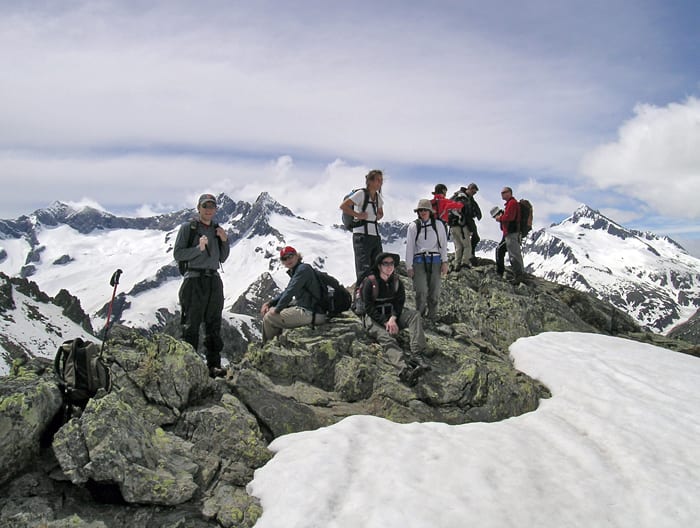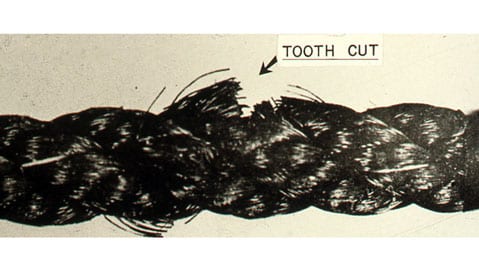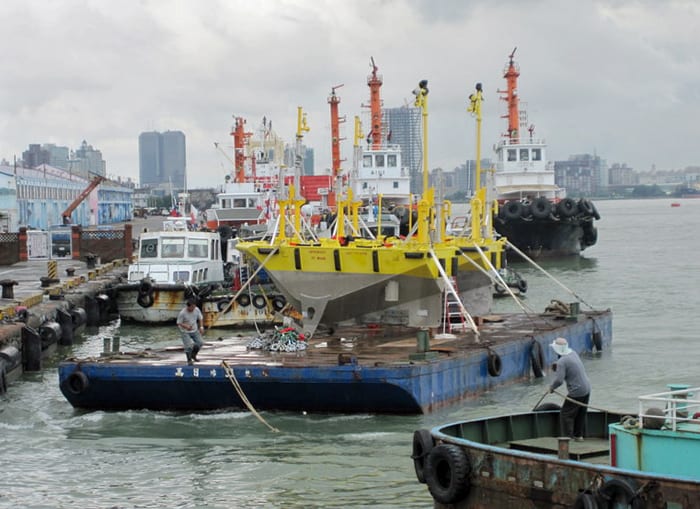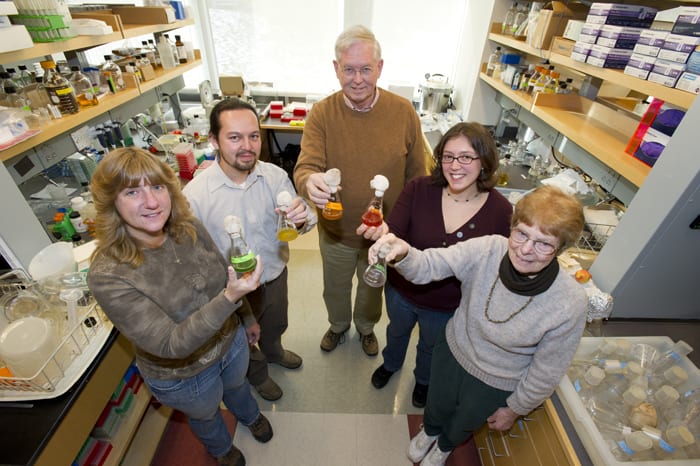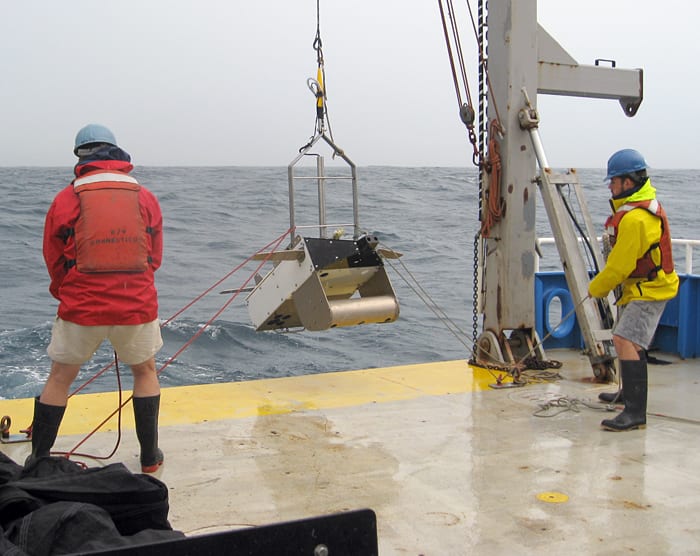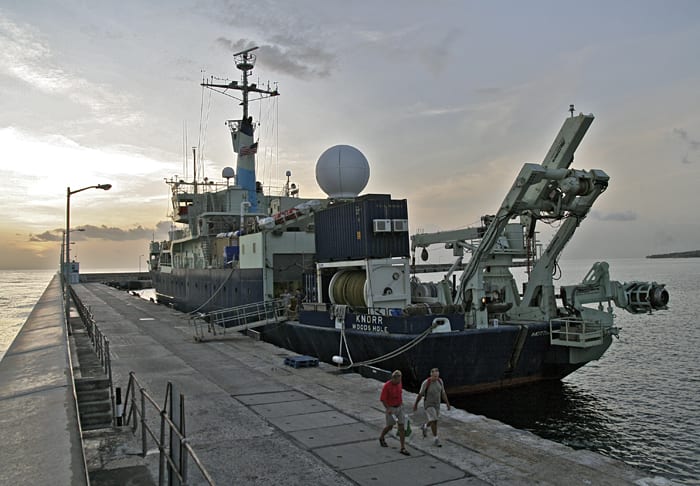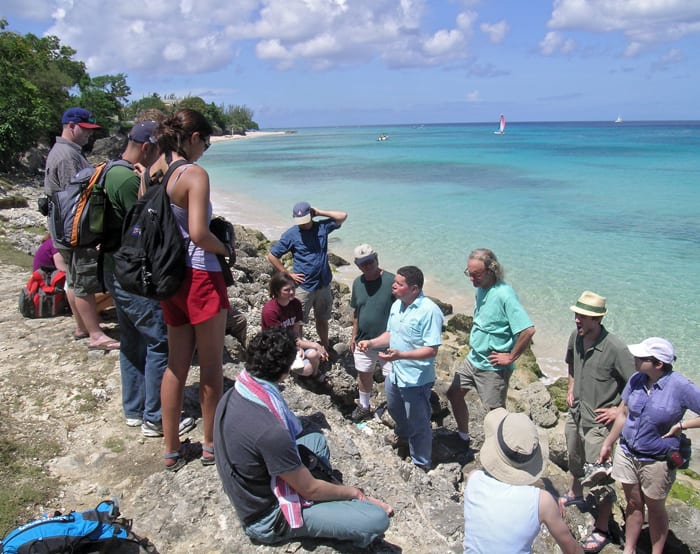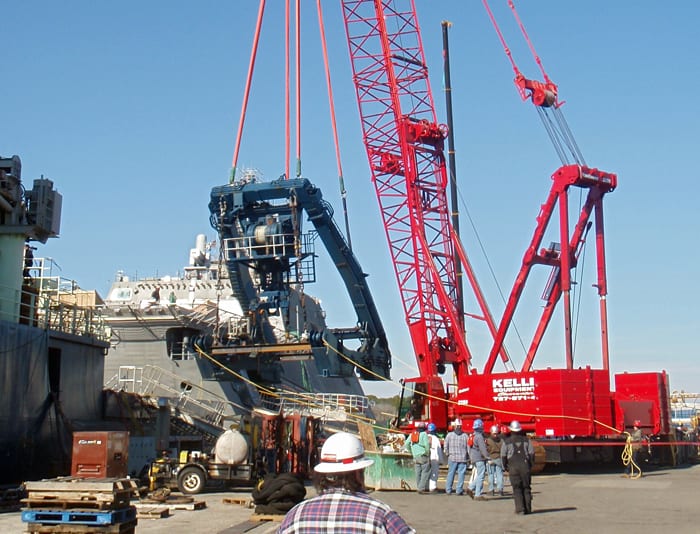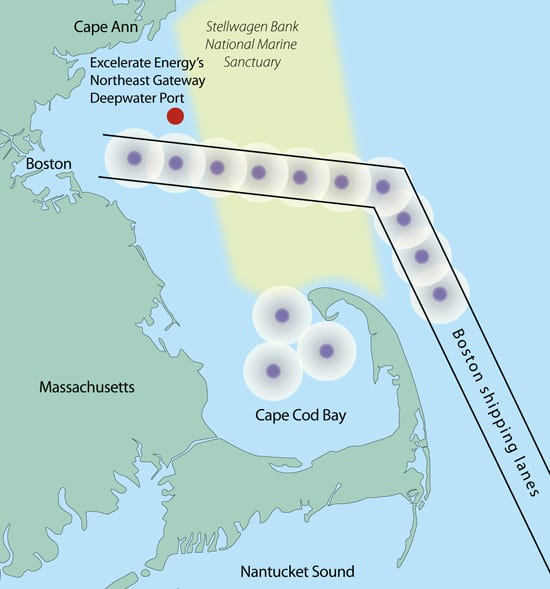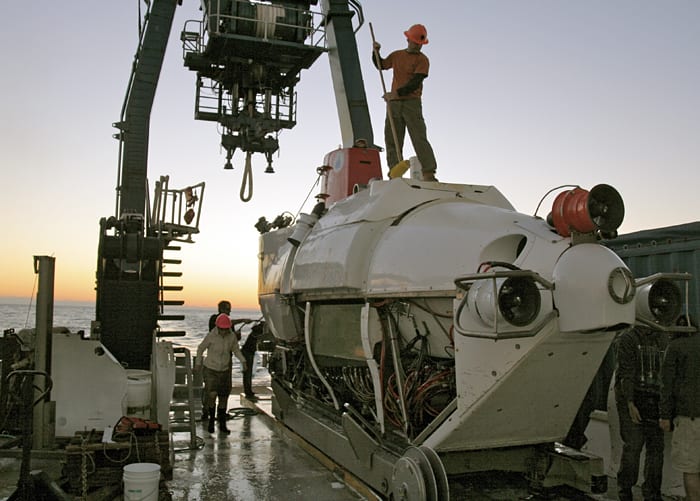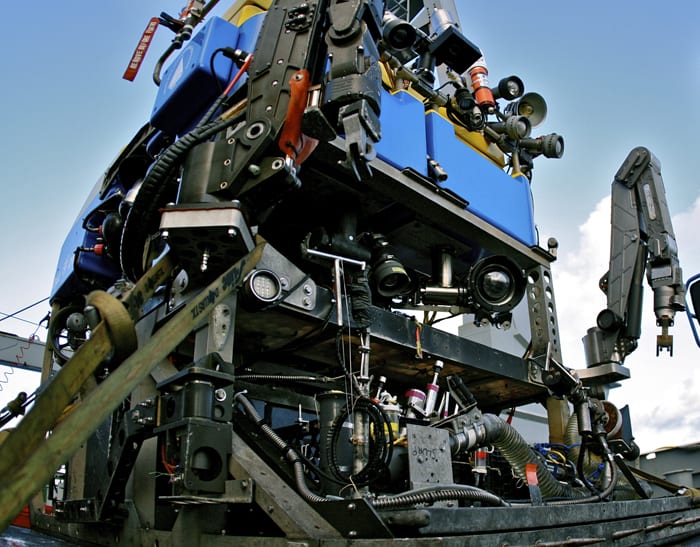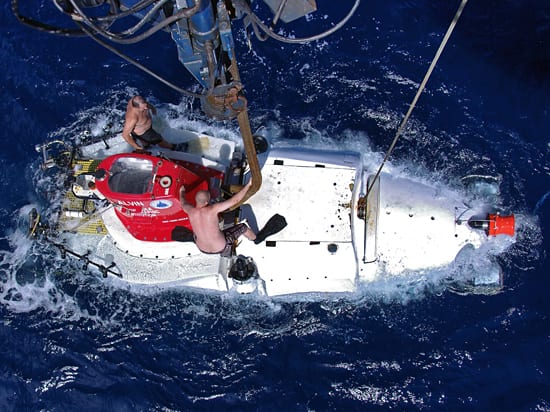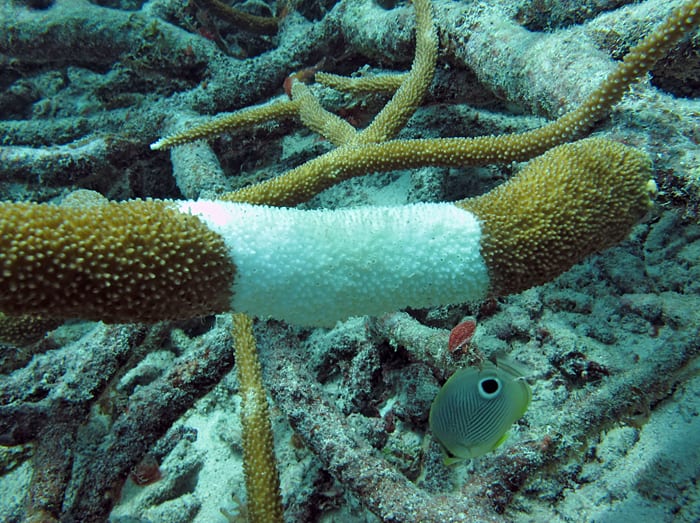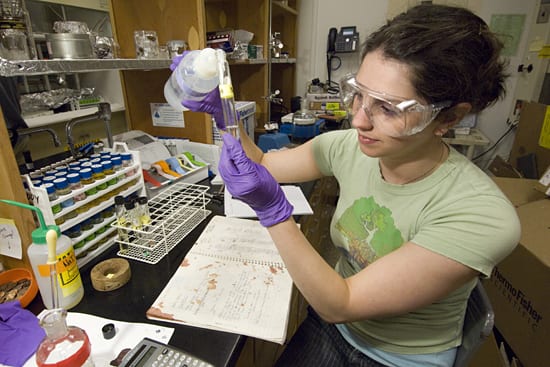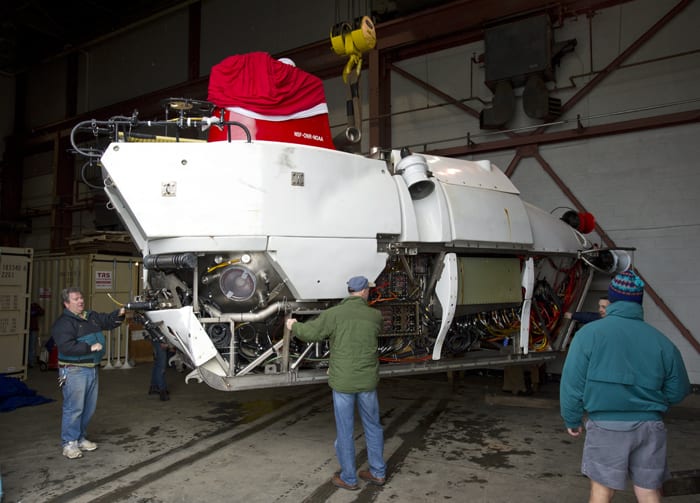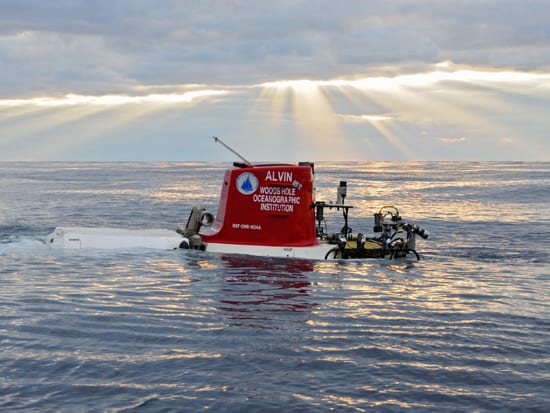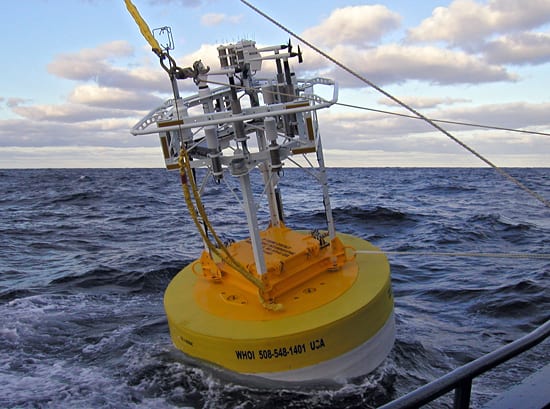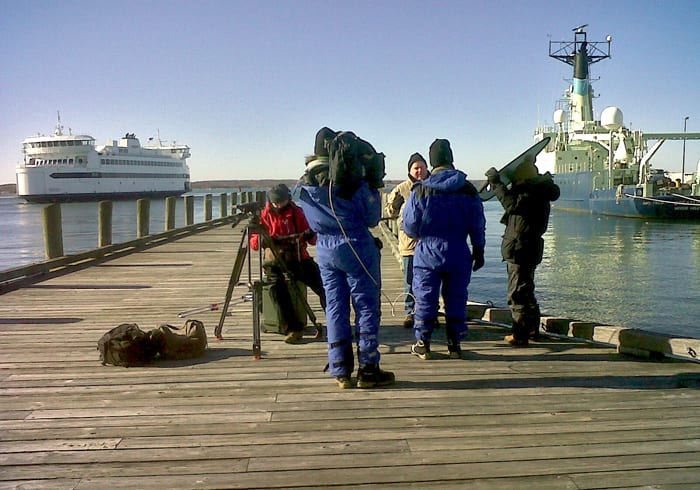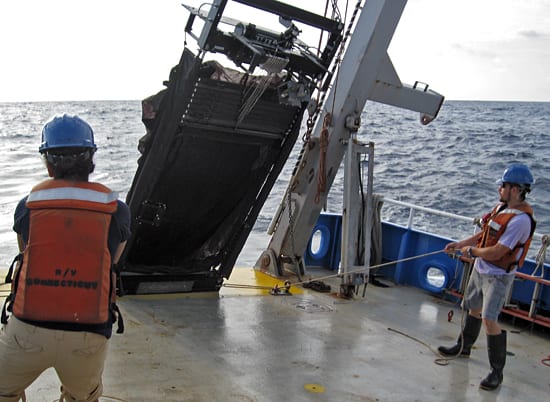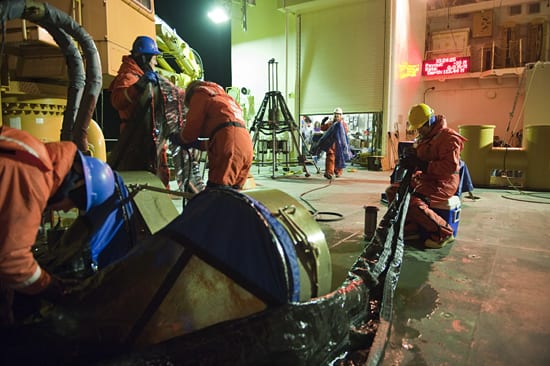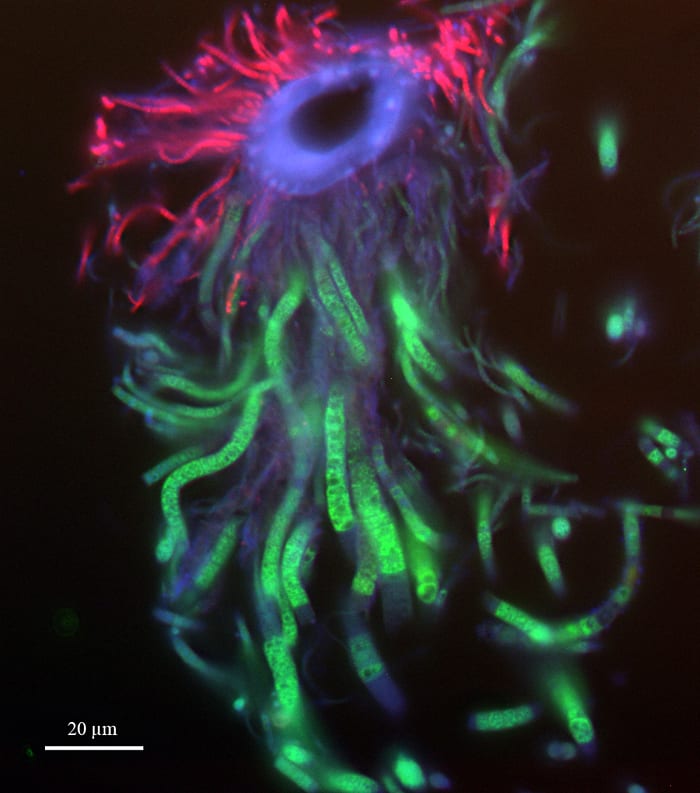Multimedia Items
Made to Last
Jim Dunn of WHOI’s Mooring Operations, Engineering, and Field Support Group holds a NOMAD buoy mooring line during a research cruise in the Pacific Ocean in July 2010. The bulky…
Read MoreNice To Meet You
Pilot Mike Skowronski (foreground) conducts a post-dive check of Alvin‘s starboard manipulator arm. Some 75 space shuttle pilots have flown missions, but since 1965, the job of driving Alvin has…
Read MoreA Matter of Crust
WHOI scientists and students take a break while hiking to see the Ocean Crust Transition exposed in the Swiss and Italian Alps during the 2010 Geodynamics Study Tour. The field…
Read MoreWhen ‘The Fish Are Biting’ is Bad News
NOMADs in Port
At the port of Kaohsiung, Taiwan, workers prepare to bring two yellow NOMAD buoys aboard the R/V Roger Revelle in July, 2010. The buoys were too large to be trucked…
Read MoreBacteria that Reduce, Reuse, Recycle
Chemist Mak Saito and colleagues recently reported that a marine bacterium recycles and reuses a scarce nutrient, iron. Crocosphaera watsonii disassembles iron-containing enzymes used by night and builds the iron…
Read MoreLanding the Catch
Over the continental slope, east of Veatch Canyon and south of Nantucket Island, WHOI biologist Peter Wiebe (left) and summer student Jon Fincke helped retrieve the “HammarHead” towed vehicle. Named…
Read MoreSun Today, Snow Tomorrow
WHOI research vessels like the R/V Knorr have to go where the science is. Sometimes that means late June in Barbados, where scientists Jim Broda and Al Gagnon (shown here)…
Read MoreGeology at the Source
WHOI’s Bill Thompson (center) speaks with students in Barbados about sea level change during the 2009 Geodynamics Seminar, “Climate Change: Forcing, Responses, and Geo-engineering.” Each year, the Geodynamics Seminar Program…
Read MoreAn “A” for Effort
In December 2010, R/V Atlantis docked in Jacksonville, Florida, for periodic maintenance, during which time the submersible Alvin was removed from the ship and trucked back to Woods Hole to…
Read MorePreventing Ship-Whale Collisions
In an effort to avert lethal collisions between ships and endangered right whales, 10 buoy systems (purple dots) were installed in the Boston Harbor shipping lanes, beginning in 2007. Each…
Read MoreScrubbing the Sub
After the last dive of any Alvin cruise the sub’s crew and science party get out on deck to take the skins off the vehicle and scrub everything down with…
Read MoreReady to Dive
The remotely operated vehicle (ROV) Jason is strapped to the deck of the University of Washington’s research vessel R/V Thomas Thompson. During the summer 2010 cruise, the ROV was used…
Read MoreReady for Recovery
A camera strategically perched on top of the research vessel Atlantis’s A-frame, captures the submersible Alvin as it is recovered from a dive in April 2010. A swimmer (bottom, right)…
Read MoreSigns of stress
A staghorn coral branch (Acropora cervicornis) on a reef west of St. Thomas, U.S. Virgin Islands, suffers from White Band Syndrome, a coral disease that has been a significant source…
Read MoreThe Origin of Plastic Marine Debris
Ellen Murphy, a high school student from Minnesota, examines samples of plastic in WHOI marine chemist Chris Reddy’s laboratory in May 2008. Murphy, Reddy, and other lab technicians and students…
Read MoreAlvin Home Again
In December 2010, the deep-submergence vehicle Alvin was trucked to Woods Hole from Jacksonville, Florida, where its support ship R/V Atlantis is undergoing routine maintenance. Alvin was then moved by…
Read MoreOceanography by the Numbers
Jessica Benthuysen, a recent graduate of the MIT/WHOI Joint Program, developed a sophisticated mathematical model of upwelling, the vertical motion of water that occurs in certain parts of the ocean.…
Read MoreAlvin in the Gulf of Mexico–And Beyond
The human-occupied vehicle Alvin traveled to the Gulf of Mexico in late 2010, where it made its final series of dives before undergoing an 18-month upgrade. Far from sailing into…
Read MoreAt Work in the Gulf Stream
WHOI technicians and engineers from the Upper Ocean Processes Group deployed this CLIMODE (CLIvar MOde water Dynamics Experiment) buoy in the Gulf Stream in late 2005. Sensors on the buoy…
Read MoreBundle Up!
A documentary crew films an interview with WHOI deep-sea biologist Tim Shank (center in brown jacket) on Dyer’s Dock during a bitterly cold January morning in Woods Hole. The interview,…
Read MoreOver it Goes!
The massive metal frame connected to long collecting nets isn’t easy to handle. Here, WHOI summer student Jon Fincke (right) and University of Connecticut grad student Paola Batta-Lona take the…
Read MoreCasting and Cleaning Nets
Researchers aboard the U.S. Coast Guard Cutter Healy gather samples collected from bongo nets during a May 2009 expedition to the Bering Sea. The nets—also known as twin plankton nets…
Read MoreColorful Microbes
How do shrimp make a living at hydrothermal vents? They have help from a variety of microbes. This image shows two kinds of bacteria attached to a hair-like structure called…
Read More
